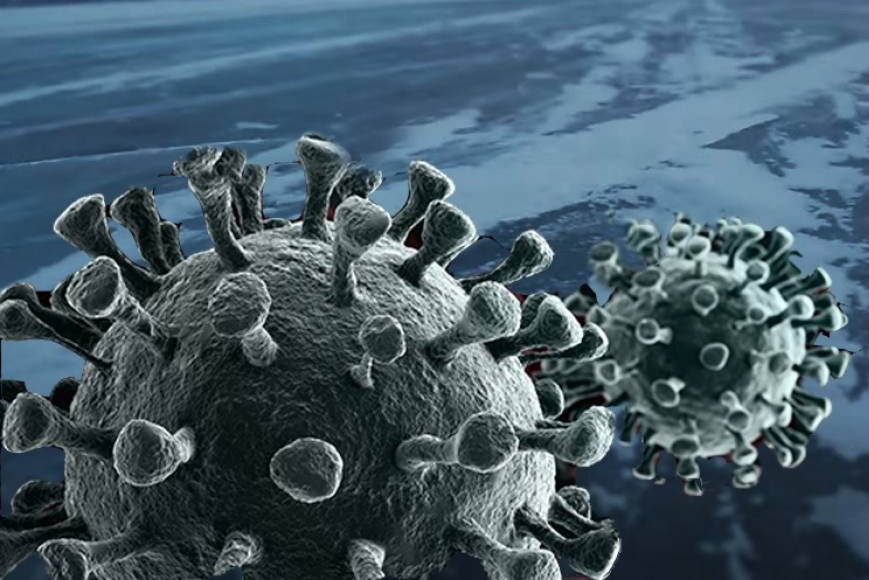Hello, news enthusiasts! Do you know something about the frozen zombie virus? You know how the coronavirus, the flu, and the common cold can make you sick, right? Well, what if I told you there’s something even worse out there? Something that has been hiding under the ice for thousands or millions of years, waiting to resurface and infect us. Something that we have no clue about and no defense against. Sounds scary, huh?
The Arctic, a region undergoing rapid and unsettling transformations due to climate change, presents a profound concern beyond its visible alterations. As the ice melts, it unravels an ominous consequence — the awakening of ancient viruses, chillingly termed “zombie viruses,” hidden in the permafrost for millennia. These microorganisms, survivors from an era predating modern humans, carry the potential to unleash diseases for which we have no immunity or treatment. Well, buckle up, because that’s exactly what the frozen zombie virus is.
Table of Contents
Unveiling the Escape of Frozen Zombie Virus
Encompassing approximately 20% of the Northern Hemisphere, the permafrost harbors a treasure trove of organic matter, including viruses suspended in frozen animation for thousands of years. Recent research, documented in the 2023 issue of the journal Viruses, sheds light on various virus strains found in Siberia. Astonishingly, these ancient viruses, such as the 48,500-year-old Pithovirus sibericum, pose an unprecedented challenge.
The permafrost, vulnerable to erosion, melting, and cracking, exposes its long-frozen contents as global warming accelerates. Human activities, like mining, drilling, construction, and tourism, further disturb the delicate balance, creating pathways for these zombie viruses to escape and potentially wreak havoc.
Once unleashed, these viruses can infiltrate humans or animals through various vectors, ranging from inhalation of virus particles in the air to consumption of contaminated water, infected meat, or contact with infected soil or objects. The potential for widespread infection and disease looms large.

Navigating the Risks and Challenges of Zombie Viruses
The principal risk lies in the potential for a new and uncontrollable disease outbreak. The ancient lineage of these viruses renders our immune responses ineffective, complicating efforts to control their spread. Adding to the challenge is their ability to mutate and adapt, potentially increasing their virulence.
A significant hurdle in addressing the threat of zombie viruses is the lack of public and governmental awareness, surveillance, and preparedness. Ethical and legal considerations surrounding the handling of permafrost samples, responsibility for safety and security, and potential outbreaks complicate the situation further.
Why should we care about the frozen zombie virus?
The frozen zombie virus is bad news for several reasons. First of all, we have no immunity to these viruses because they have never been around humans before. That means they could cause serious and deadly diseases, just like the coronavirus did.
Second, we have no idea what kind of viruses are hiding in the permafrost or how many of them there are. Some of them might be harmless, but others might be nasty. For example, scientists have found traces of poxviruses and herpesviruses, which are known to cause problems for humans, in the permafrost.
Third, the frozen zombie virus could escape from the permafrost as it melts because of global warming. This could expose humans and animals to these viruses and start a new pandemic. This is not a fairy tale but a real possibility, according to some experts.
Strategies to Prevent and Prepare for the Zombie Apocalypse
Preventing the release of zombie viruses necessitates a global commitment to reducing greenhouse gas emissions and mitigating climate change, effectively slowing down or halting permafrost thawing. However, acknowledging the irreversible thawing in some regions, proactive measures are essential.
To confront this latent threat, we must enhance our understanding of these viruses, intensify surveillance and response systems, bolster medical and public health capacities, and educate the public about the risks involved. International collaboration and cooperation across disciplines, sectors, and countries become imperative to minimize the potential impact and damage of a zombie virus outbreak.
Conclusion

The frozen zombie virus, an unsettling reality emerging from the melting Arctic permafrost, demands our attention and preparedness. By staying vigilant and proactive, we can safeguard not only our health and well-being but also the delicate Arctic environment and biodiversity, which are crucial for the equilibrium and stability of our planet.
Get the latest news at Today’s News.info. From politics to entertainment, national to international, stay ahead and informed with our global coverage.
Frequently Asked Questions (FAQs)
Q: What is a frozen zombie virus?
A microorganism trapped in permafrost for thousands of years, capable of infecting living cells.
Q: How could a frozen zombie virus be released?
Thawing permafrost, accelerated by global warming and human activity in the Arctic.
Q: What are the risks and challenges of a frozen zombie virus?
The risk lies in causing an unprepared disease outbreak with potential mutability and a lack of awareness, surveillance, and preparedness.
Q: What can we do to prevent or prepare for a frozen zombie virus?
Reduce greenhouse gas emissions, increase knowledge, improve surveillance and response systems, enhance medical capacities, and collaborate internationally.

